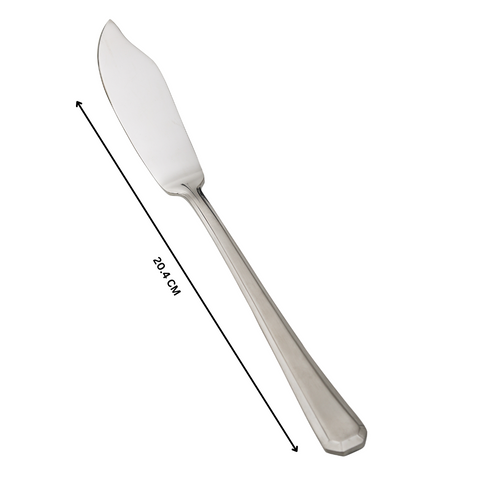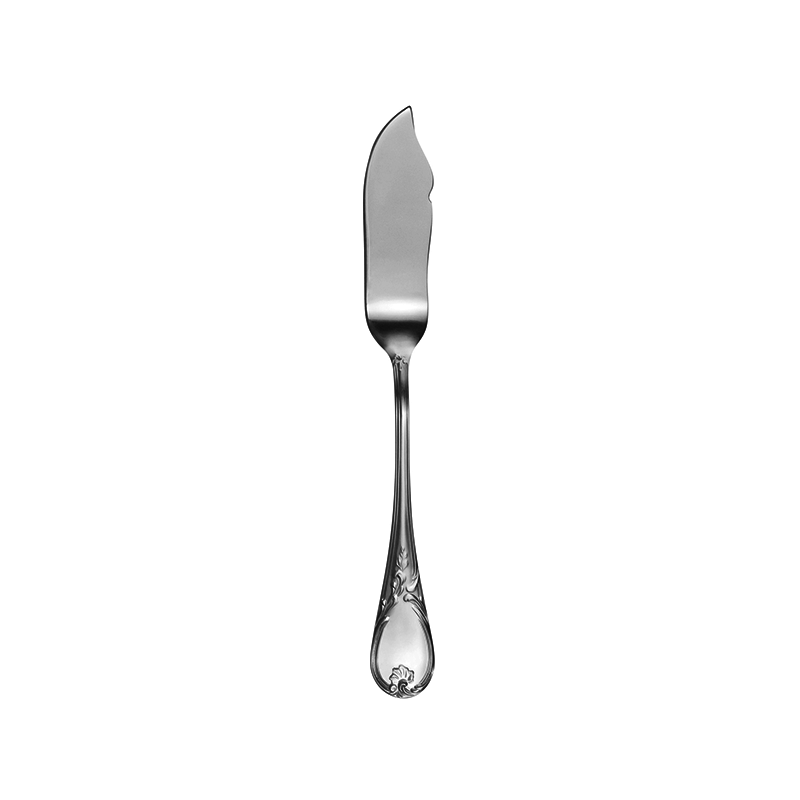The Ultimate Overview to Preserving Your Fish Knife for Longevity and Efficiency
Maintaining a fish knife is vital for guaranteeing its long life and ideal efficiency. Appropriate treatment entails a series of steps, including cleaning, developing, and storage space. Each phase adds to the knife's performance during use. Recognizing these practices can make a considerable distinction in the life-span of this important tool. Lots of customers overlook crucial elements of upkeep that can lead to wear and tear. What are these often-forgotten steps?
Selecting the Right Fish Knife for Your Requirements
When choosing the excellent fish knife, what key features should one take into consideration? The blade's versatility is vital, enabling for accuracy while filleting different fish types (fish knife). A thin, narrow blade usually enhances maneuverability, making it easier to navigate around bones and skin. The product of the blade additionally plays a crucial role; stainless-steel uses sturdiness and rust resistance, important for frequent exposure to water
In addition, the take care of's layout needs to not be forgotten. It needs to supply a comfortable grip, preferably featuring non-slip materials that ensure security throughout use. The knife's length is an additional variable; shorter blades can offer far better control, while longer blades may be helpful for larger fish. Weight is important; a well-balanced knife permits for prolonged use without exhaustion. By very carefully thinking about these attributes, one can select a fish knife that fulfills certain needs for efficient fish preparation.
Proper Cleaning Techniques After Each Usage
Proper cleansing techniques after each usage are necessary for keeping the durability and efficiency of a fish knife. Promptly after filleting fish, it is crucial to rinse the knife under warm water to get rid of scales, scum, and any kind of residual fish juices. Utilizing a soft sponge or towel, the user needs to gently scrub the blade and take care of, paying special focus to any type of crevices where debris might gather. Avoid making use of abrasive materials that can damage the blade's surface. After cleaning, the knife needs to be completely dried with a tidy towel to avoid moisture-related damage. Using a food-safe mineral oil regularly can aid preserve its stability if the knife has a wooden deal with. Saving the knife in an assigned sheath or magnetic strip can even more safeguard it from accidental damages and guarantee it remains prepared and tidy for future use. Regular adherence to these cleansing practices will certainly improve the knife's life expectancy and effectiveness.
Honing Your Fish Knife: Methods and tools
Sharpening a fish knife is a crucial process that enhances its performance and makes sure tidy cuts while filleting. To attain optimum intensity, numerous tools can be utilized. A whetstone is taken into consideration one of the most reliable methods, enabling precise control over the sharpening angle. Customers need to wet the rock and maintain a constant 20-degree angle while gliding the blade throughout its surface.
Conversely, a refining pole can be used for regular maintenance, straightening the blade's side without removing product. For benefit, electric sharpeners provide a quick remedy, though they might not provide the very same degree of finesse as manual approaches.
Despite the selected technique, it is important to do with a leather strop to polish the edge, making sure a razor-sharp surface. Routine honing not only prolongs the life of the fish knife however likewise enhances the total effectiveness of the filleting process.
Keeping Your Fish Knife for Optimum Defense
After sharpening a fish knife, focus must transform to its storage to keep the blade's integrity and performance. Appropriate storage space is vital for preventing damage, dulling, and corrosion. Preferably, a fish knife ought to be saved in a protective sheath or knife roll, which shields the blade from contact with ecological variables and various other utensils (fish knife). Magnetic strips can likewise be efficient, permitting for secure and obtainable storage while maintaining the blade safe and secure

Regular Upkeep Regimens to Adhere To
A regular maintenance routine is vital for protecting the capability and appearance of a fish knife. Normal cleansing after each usage is important; washing the blade with cozy water and mild soap removes any type of deposit. It is advisable to dry the knife completely to stop rust. Regularly, a light application of food-safe mineral oil can aid protect the blade and preserve its shine.

Lastly, keeping the fish knife in a safety case or sheath protects against unexpected damages and keeps it all set for use. Complying with these upkeep routines will significantly improve the long life and effectiveness of the fish knife.
Often Asked Inquiries
Can I Use My Fish Knife for Various Other Sorts Of Fish?
Yes, a fish knife can be used for various other types of fish. Nonetheless, the effectiveness might differ relying on the knife's layout and the details fish being processed, impacting efficiency and accuracy throughout prep work.
What Materials Are Best for a Fish Knife Blade?
Stainless-steel and high-carbon steel are taken into consideration the most effective products for a fish knife blade. Stainless steel uses rust resistance, while high-carbon steel offers exceptional sharpness and side retention, important for efficient fish prep work.
Just how Commonly Should I Replace My Fish Knife?
A fish knife ought to usually be changed every 3 to 5 years, relying on use and maintenance. Normal examination for indications of wear or damage can additionally assist determine the right time for replacement.
Exist Particular Brands Recognized for Top Quality Fish Knives?
Certain brands, like Wüsthof, Victorinox, and Rapala, are renowned for generating premium fish blades. These brands are recognized for their resilience, intensity, and ergonomic styles, making them recommended more info options among angling enthusiasts and professionals alike.
Can Temperature Affect My Fish Knife's Efficiency?
Temperature level can substantially influence a fish knife's efficiency. Extreme warm may cause blade materials to warp, while cool problems can lead to brittleness. Preserving an optimal temperature is necessary for maintaining the knife's capability and toughness.
The knife's size is another factor; shorter blades can offer much better control, while longer blades may be helpful for larger fish. Immediately after filleting fish, it is critical to rinse the knife under cozy water to remove ranges, scum, and any residual fish juices. After honing a fish knife, attention needs to turn to its storage space to keep the blade's integrity and efficiency. Ideally, a fish knife need to be kept in a protective sheath or knife roll, which shields the blade from contact with environmental factors and other utensils. Yes, a fish knife can be used for other types of fish.